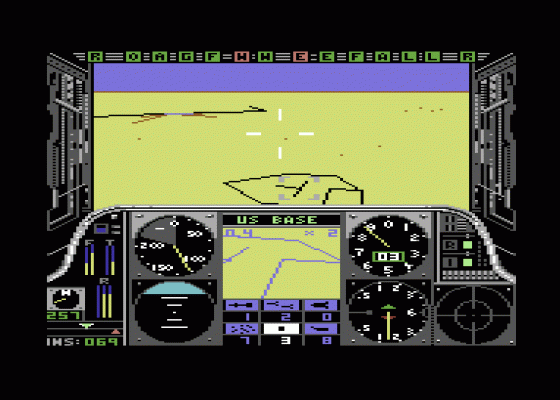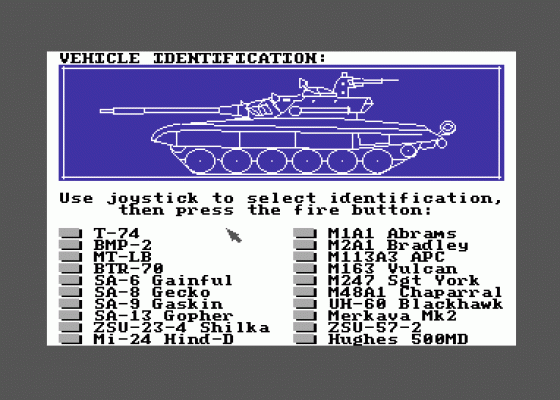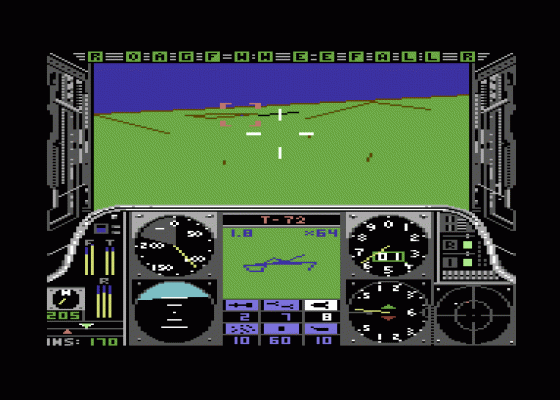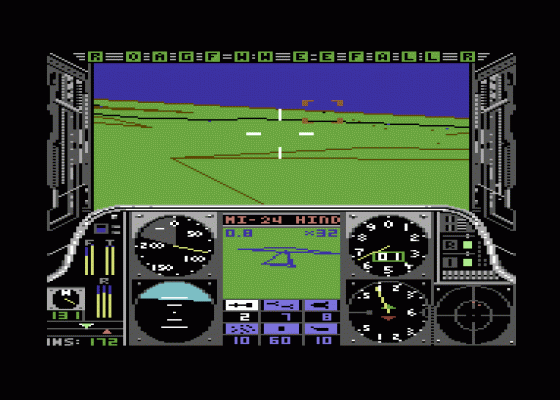
Computer Gamer
 1st April 1987
1st April 1987
Categories: Review: Software
Publisher: Microprose
Machine: Commodore 64
Published in Computer Gamer #25
Gunship
Experience the danger and excitement of combat helicopter flying without the suffering and bloodshed.
That's the claim of this superb program that allows you to plot your progress from trainee pilot to combat pilot, fighting your way through the warzones of the world. Forget all the other so-called simulations, this is the real thing, featuring so many options they'l make your head spin as fast as your rotorblades!
Even the game's box is impressive, if a little daunting, as it not only contains the game (on tape or disk) but also a keyboard overlay to make sense of the game's 31 keyboard and joystick controls, and an 84-page instruction book.

Your helicopter is a digitised version of the Apache AH-64A high-tech combat helicopter, featuring lasers, cameras, night viewers, infra-red and radar warning systems, jammers, computers and an impressive arsenal of guns and missiles. All contained in only 64%!
Luckily, flying the Apache is easier than it looks initially as basically all you have to do is control the power feed through to the rotorblades and move the joystick forwards and backwards to control height and speed. But this doesn't mean you'll become an expert in five minutes. Indeed, initial attempts are likely to turn very low risk training flights into suicide missions! However, if you follow the two flight tutorials and use the keyboard overlay and pause button, it won't be too long before you leave the training grounds behind and line up for the real thing.
Before you begin a mission, you must read the brief that defines your primary and secondary targets, study the map to plan your attack route, digest intelligence reports warning of the enemy's threat and arm your Apache with the weapons to do the job. The targets can be either enemy headquarters, fuel depots or heli-bases, or an area that must be cleared of infantry, tanks and artillery to prepare a landing zone. The game contains over 100 missions, varying from easy strike missions to almost impossible clearing missions a long way from base that take you through miles of hostile air space. If you don't think you can handle the job then you can always go on sick leave, but even this entails risk as you'll be immediately transferred to another warzone.

The screen display shows a 3D view through the forward, left or right cockpit windows and your panel of instruments, displays and warning lights. The main flying instruments are the four dials that display current airspeed, height (altimeter), rate of climb or descent and an artificial horizon so you can maintain level flight. Additional data comes from the fuel gauge, compass, destination indicator, radar and infra-red warning lights that alert you to incoming missiles. A threat display plots enemy helicopters and a bank of fourteen warning lights monitor any damage. The most important display is the 'CRT' that either shows a mini map of your current location, a message from base, or locks in to your 'TADS' weapons system.
Once you can fly the helicopter, and steer clear of the mountains that litter the landscape, your success will depend on how well you use the TADS (Target Acquisition and Designatin System) weapons system. This highly sophisticated computer controlled system locks onto any target in range and presents you with a cursor to aim guns or missiles, or a vector graphic of the target indicating its range. Unfortunately, the system locks onto any target - including your own tanks and infantry, so you should check before you fire!
A list of units included in the game are detailed in the back of the booklet but you'll soon find out if you hit the wrong target. Once TADS has locked onto a target, you can fire at it using any of your weapons but only one at a time. Which weapons to use for which target is also a skill to be learnt by rookie pilots.

Before you can take off on a mission, you can arm your Apache with 30mm cannon shells and a selection of sidewinder, hellfire and 2.75" Ffar rockets and missiles. The sidewinders are ideal for gunning down enemy helicopters - they're known, aptly, as fire and forget air-to-air missiles as once fired they guide themselves to their target, leaving you ree to attack something else. The hellfire anti-armanent missile is ideal for taking out tanks and bunkers but useless against anything else. The hardest to fire are the Ffar rockets which are unguided and travel in a straight line so you must aim your cursor in the centre of the TADS sight before firing. It's also wise to fire a salvo of rockets to make sure of a hit. But it's worth the effort to learn how to use these rockets since they make mincemeat out of the enemy's helicopters and can wreck guns, depots and command headquarters.
The exact nature of the enemy you will face depends on the mission and the region you're fighting in. After training, your first position is likely to be in south east Asia battling against poorly armed, but hard to find, forces. The main threat to you will be 57mm guns. Tougher guerillas await you in central America, but it's the Middle East that presents the real challenge as you'll be up against armoured mobile SAM missiles as well as Hind helicopters. Finally, you can join in the pitched battle against the Russians in a conflict in Western Europe where your chances of survival are unlikely.
In most computer games losing a life is only a temporary setback but in Gunship it could mean the loss of a few months work. You begin the game as a lowly sarge but by completing missions you score points, win medals, such as the Central American Campaign (CAC) medal, and get promoted to warrant officer through to leutenant, captain and major to colonel. Getting killed in a mission means the end of the line and a fresh start as a sergeant!

Real heroes can spice up the action by volunteering for extra hazardous or suicidal missions and by adding in more levels of reality, that make flying more difficult, by restricting the weapons they carry and increasing the strength of the enemy, for instance.
This is the first game from Microprose since it set up its own UK operation and is an impressive debut. Over 100 missions - day and night - should keep most pilots glued to their screens and send them back again and again to fly just one more mission. Playing the cassette version obviously slows down the action because of increased loading times but has added bonuses, including a title screen where the helicopter rises up onto the screen then blasts the title with its 30mm cannon.
Congratulations to Microprose for turning a much maligned format into an incredibly addictive game.
Other Reviews Of Gunship For The Commodore 64
Gunship (MicroProse)
A state of the art helicopter/combat simulation - Zzap Sizzler
Gunship (Microprose)
A review
Gunship (MicroProse)
A review by John Hutchinson (Commodore User)








